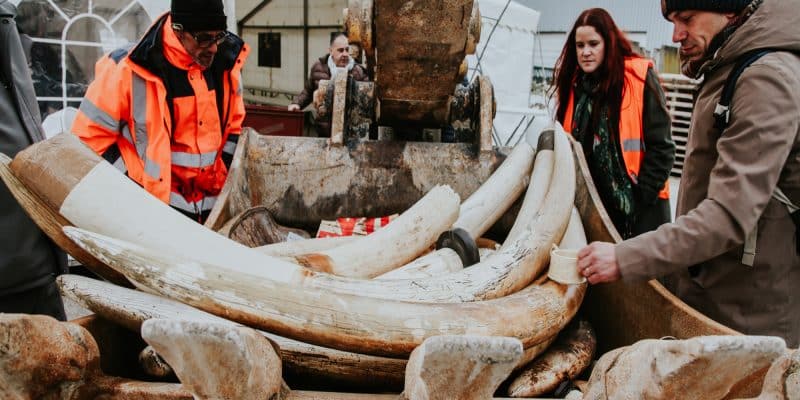The International Fund for Animal Welfare (IFAW) and the French Biodiversity Office (OFB) organised a large-scale ivory destruction operation on 28 November 2023. The operation, carried out in the commune of Reims in south-east France, is aimed at curbing the ivory trade and raising awareness of a trade responsible for the deaths of thousands of elephants, particularly those in Africa. In the space of a century, African elephant populations have plummeted by more than 90% as a result of poaching.
There are now 400,000 elephants left in Africa, a decline of 70% compared to the 1970s, when the population of this pachyderm was estimated at 1.3 million individuals. According to the International Fund for Animal Welfare (IFAW), this decline is mainly due to poaching. In the space of a century, poaching has caused African elephant populations to fall by 90%.
To put a stop to this massacre, IFAW and the French Office for Biodiversity (OFB) organised a large-scale ivory destruction on 28 November 2023 in Reims, south-east France. In all, 1.8 tonnes of ivory were crushed before being burnt. This quantity of ivory, transformed into decorative objects, represents around 180 elephants, which had been slaughtered for their tusks.
In the wake of this action, IFAW France has also pledged to plant one tree in Zimbabwe for every kilogram of ivory received, in order to help restore the elephants’ habitat. According to the organisers, the destruction of African elephant habitat is one of the main causes of the erosion of biodiversity.
Nearly a tonne of ivory destroyed in 2018
This operation is part of the “I give my ivory” campaign, launched in 2015 by IFAW, which aims to encourage people who own any ivory item (tusks, trinkets, jewellery) to hand it in for destruction. An operation carried out in 2018 resulted in a tonne of ivory being crushed, helping to dry up the ivory market and send a strong message to traffickers.
“The exponential demand for the collection of these objects since the first collection in 2015 demonstrates the real need to offer private individuals a solution for disposing of their ivory, whether out of ethical conviction or because they are unable to sell it legally following the latest changes in regulations,” explains Mia Crnojevic-Cherrier, Campaigns Officer at IFAW.
Read also-ZIMBABWE: Will CITES allow government to sell 136 tonnes of ivory?
The persistence of legal domestic markets for ivory in the European Union (EU) and elsewhere has enabled criminals to launder illegal ivory from poaching. It places the burden of proof of this illegality on law enforcement agencies and has confused consumers about the legal or illegal origin of the ivory available. For this reason, in May 2018, more than 90 Members of the European Parliament called for a total ban on the import and trade of ivory in the EU, and an initial public consultation, launched by the European Commission, showed that more than 90% of the 90,000 people questioned were in favour of a ban on this trade in the EU.
Boris Ngounou







